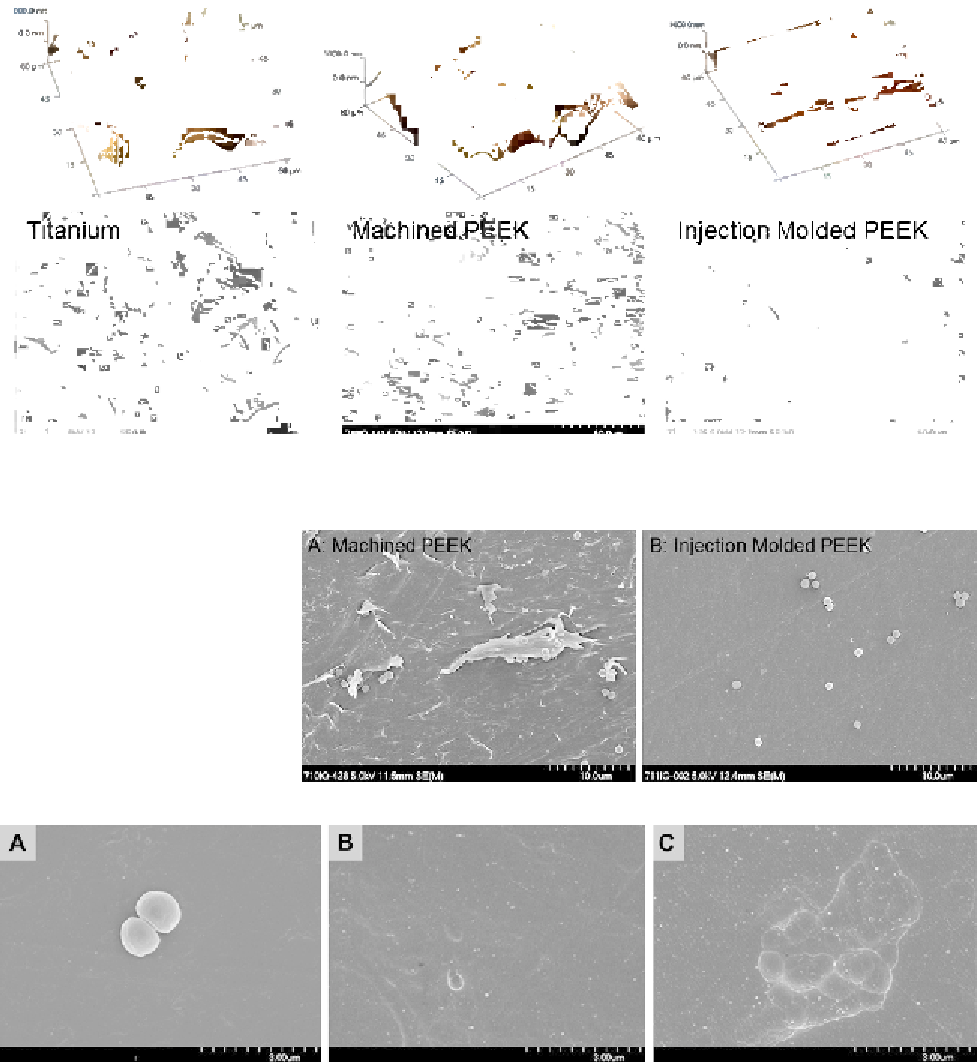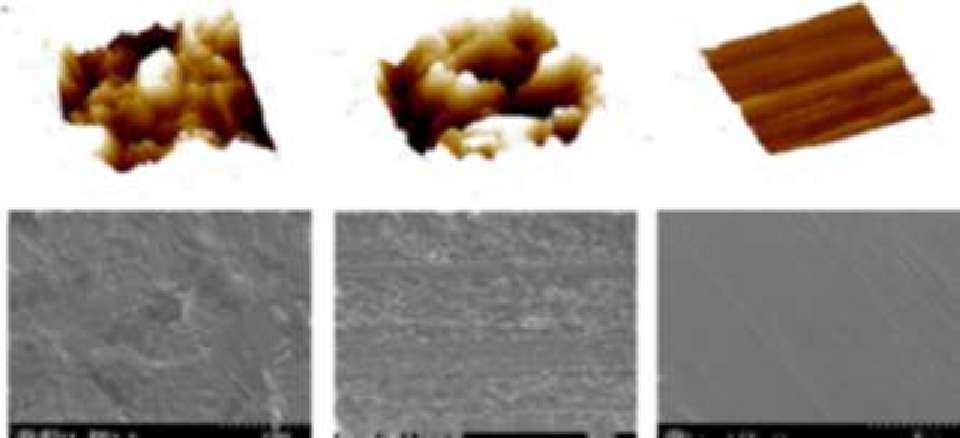Biomedical Engineering Reference
In-Depth Information
Figure 8.6
Atomic Force (top) and SE (bottom) micrographs of typical examples of commercially pure titanium,
machined PEEK, and injection-molded PEEK biomaterial surfaces.
Figure 8.7
SE micrographs
of adherent
S
.
aureus
, the ~1-
m
m-diameter spheres, on (A)
machined PEEK and (B) injection-
molded PEEK surfaces.
Figure 8.8
(A) Untreated injection-molded PEEK topography with two adherent
S
.
aureus
for scale. Exposure to
oxygen plasma results in the etching of a nanotopography and some pitting after 15 min (B) and extensive etching
and pitting after 15e30 min (C).
Section
8.3.2
). Prolonged exposure to oxygen plasma
can lead to etching of the polymer surface, creating
a topography consisting of recesses and peaks. Due to
the semicrystalline nature of PEEK, recesses form
more readily in amorphous areas susceptible to
etching while peaks form in regions of crystalline
polymer more resistant to the effects of plasma
exposure
[84]
. However, work from our laboratory
shows that the increase in nanoscale roughness
produced by plasma
etching injection-molded


